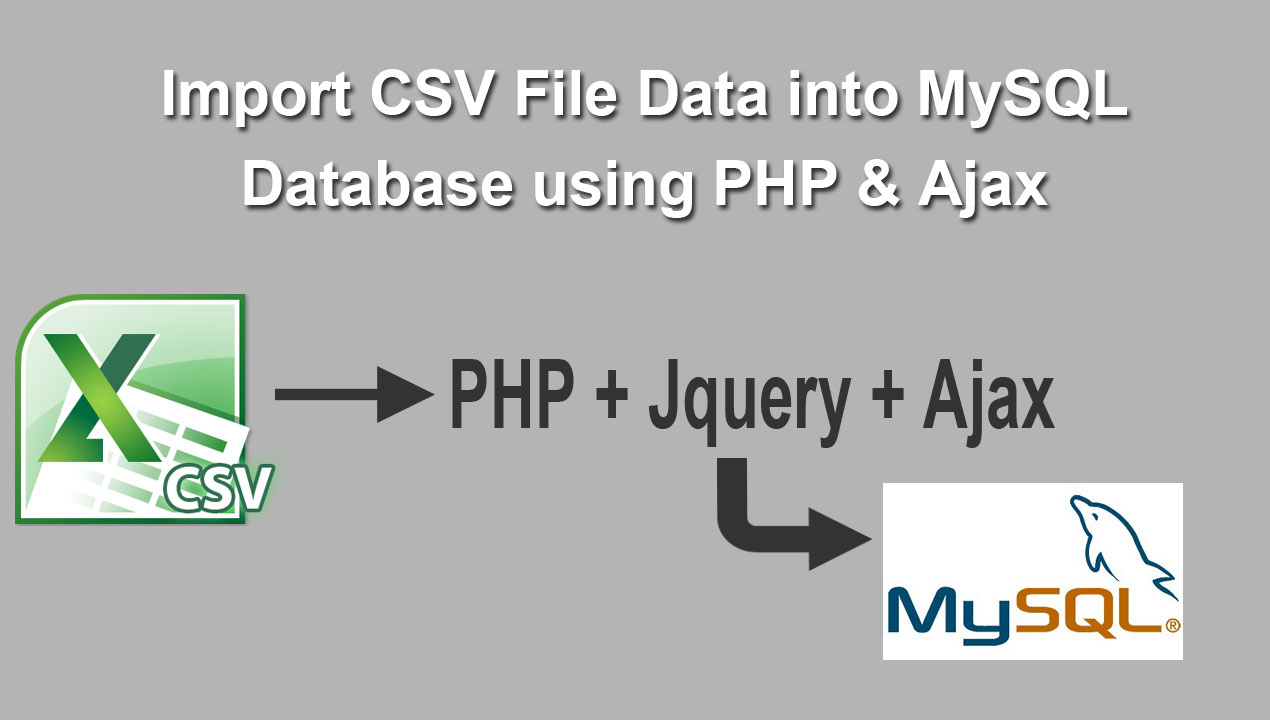

The name of the newly created table will be the same as the file’s name, whose path was given before.Īlternatively, we can look up the data from this table to ensure that this table has been created. Once all the tabs are run successfully, you can see the table created in the left-hand side tab on your MySQL Workbench. We keep clicking next until our task has been executed. Once we click on the tab, we can choose the path of our CSV file and click Next, as shown below. It can be illustrated as shown in the figure below. It would show us the tab Table Data Import Wizard. We can perform this operation in MySQL Workbench by right-clicking our database’s Tables tab. Use MySQL Workbench to Create Table From CSV in MySQL

Mysql create table from csv how to#
Now that we have our data set up in the CSV file, let us learn how to convert this data into a table in MySQL. A look into our CSV file can be illustrated as follows. Let us collect some data in a CSV file to understand this better. In this tutorial, let us get our hands around this concept. its also easy to make, create and generate Insert SQL online via Table.
Mysql create table from csv password#
Specify the database host ( $dbHost), username ( $dbUsername), password ( $dbPassword), and name ( $dbName) as per your MySQL database credentials.Sometimes, it becomes necessary for analysts to create tables directly from such CSV files. This converter is used to convert CSV (Auto-detect Delimiter) into Insert SQL. The dbConfig.php is used to connect the database. To import the data from CSV file, the format will similar the following screen. USE ShakeOut GO CREATE TABLE CSVTest1 (Ticker varchar (10), dateval smalldatetime), timevale time (), Openval varchar (10), Highval varchar (10), Lowval varchar (10), Closeval varchar (10), Volume varchar (10), ) GO BULK INSERT CSVTest1 FROM 'c:\TEST.txt' WITH ( FIELDTERMINATOR ',', ROWTERMINATOR ' ' ) GO -Check the content of the table. ) ENGINE= InnoDB DEFAULT CHARSET=utf8 COLLATE=utf8_unicode_ci CSV File Formatīased on the database table structure, the CSV file should have these fields – Name, Email, Phone, and Status. `status` enum( 'Active', 'Inactive') COLLATE utf8_unicode_ci NOT NULL DEFAULT 'Active', `phone` varchar( 15) COLLATE utf8_unicode_ci NOT NULL, `email` varchar( 50) COLLATE utf8_unicode_ci NOT NULL, `name` varchar( 50) COLLATE utf8_unicode_ci NOT NULL, The following SQL creates a members table with some basic fields in the MySQL database. To store the member’s data, a table needs to be created in the database. According to this script functionality, the user would be able to upload a CSV file of members details, and members data will be inserted into the MySQL database using PHP. In the example script, we will import the member’s data from a CSV file and insert it into the database using PHP and MySQL. In this tutorial, we will show you how to upload CSV file and import data from CSV file to MySQL database using PHP. Import CSV into MySQL helps to save the user time and avoid repetitive work. Using the CSV file you can store the data and import the CSV file data into the database at once using PHP and MySQL. In that situation, the import feature helps to insert a bunch of data in the database with a single click.īulk Import is a very useful feature to add multiple records in the database without insert manually. When there is needed to add huge data into the MySQL database, it will very time-consuming to add data one by one. Each line of the CSV file is a data record that consists of one or more fields.

Basically, the CSV file format is used to import to or export from the table data.

A CSV (comma-separated values) file stores the tabular data in plain text format.


 0 kommentar(er)
0 kommentar(er)
